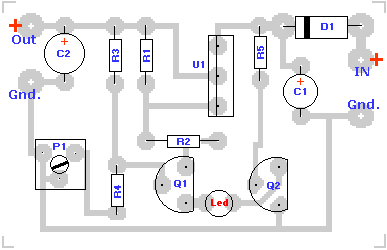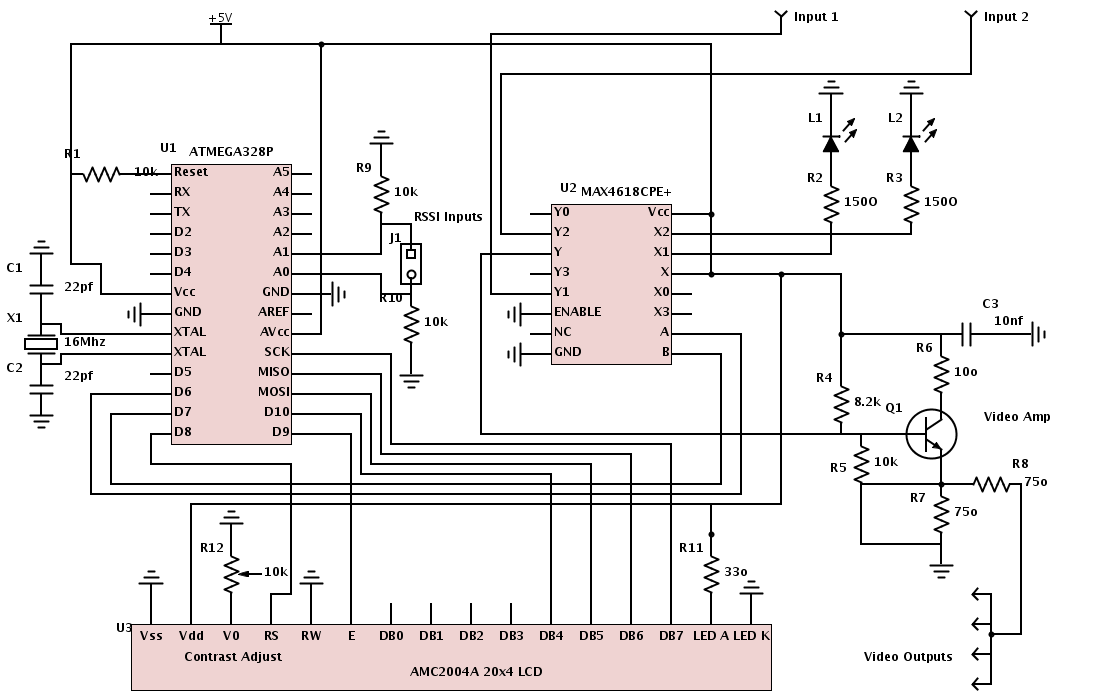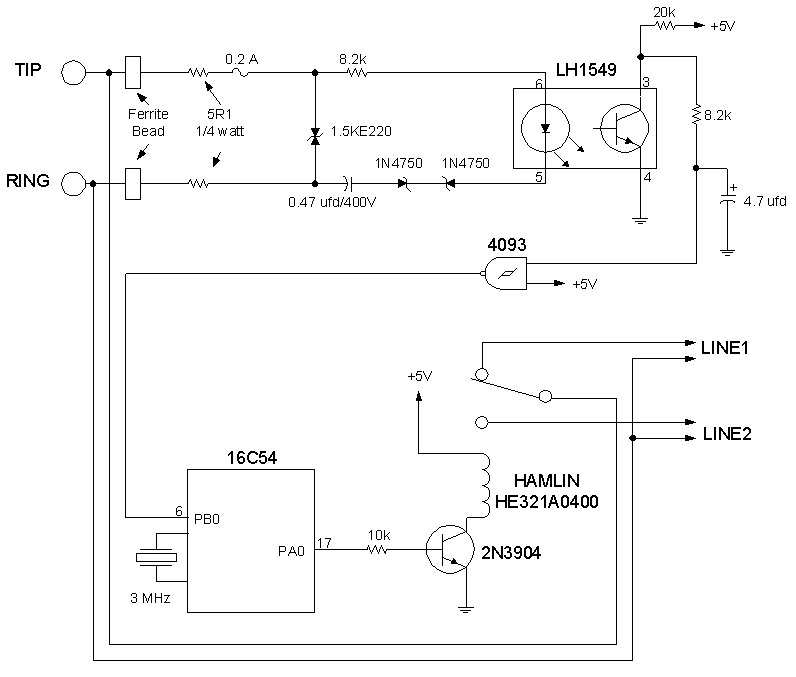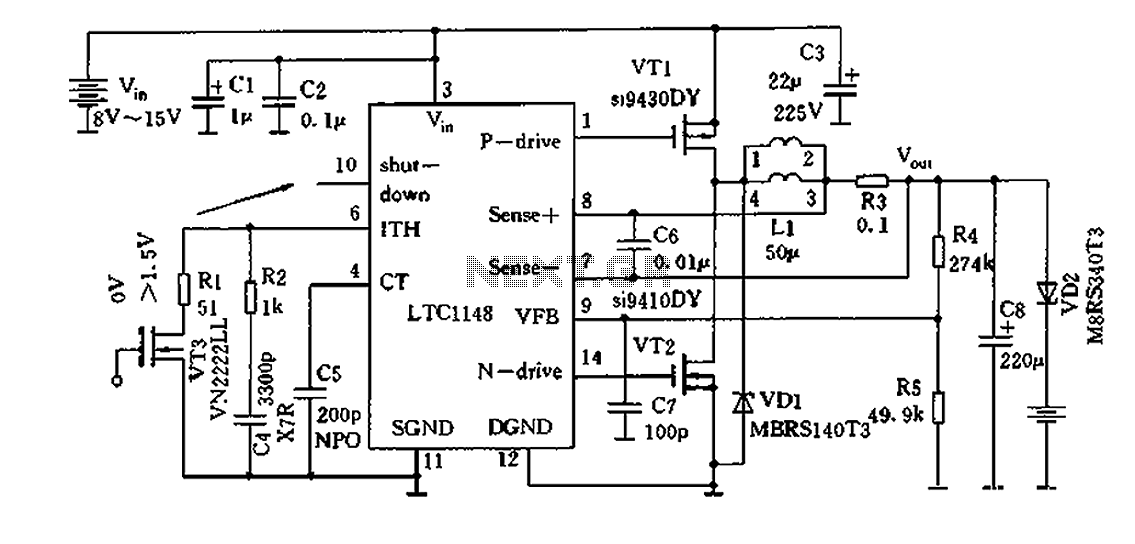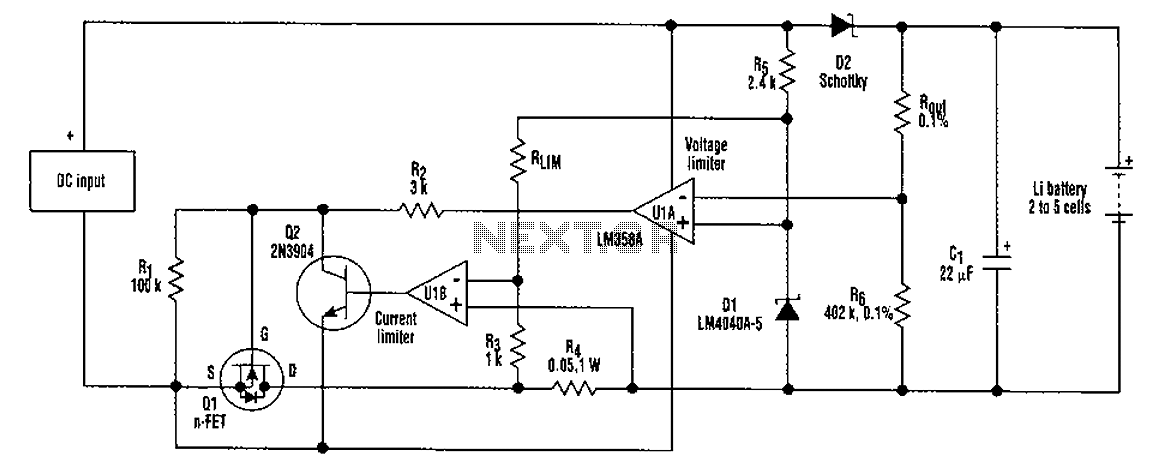
Solar Powered Cell Phone Charger
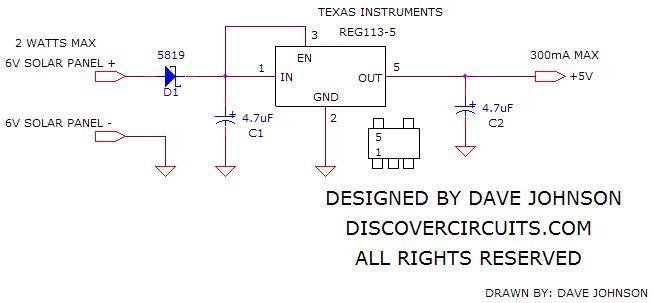
The simple circuit below regulates the voltage from a 6V solar panel to a fixed +5V. This voltage can be supplied to any cell phone or USB-connected portable device to charge its battery. The circuit utilizes a Reg113-5 voltage regulator from Texas Instruments, which is capable of handling up to 400mA of charging current. It is recommended to use a solar panel rated for...
The circuit design incorporates a 6V solar panel as the primary energy source, which provides an input voltage that is higher than the desired output of +5V. The Reg113-5 voltage regulator is chosen for its efficiency and compact size, making it suitable for portable applications. This linear voltage regulator is designed to deliver a stable output voltage while accommodating variations in input voltage and load conditions.
To construct this circuit, the solar panel is connected to the input pin of the Reg113-5. The output pin of the regulator is connected to the load, which can be a cell phone or any USB-powered device. Additional components may be included to enhance performance and reliability. For instance, input and output capacitors are recommended to stabilize the voltage levels and filter out any noise that may be present in the circuit. Typically, a 10µF capacitor can be placed at the input and a 1µF capacitor at the output to ensure smooth operation.
Furthermore, it is essential to consider the solar panel's rating to ensure it can provide sufficient current under varying sunlight conditions. A solar panel rated for at least 1.5W to 2W would be appropriate for charging purposes, as this would allow for adequate charging current even during less-than-ideal lighting conditions.
The overall design is compact and efficient, making it ideal for portable charging solutions. This circuit can be integrated into various applications, including solar-powered chargers for mobile devices, thereby promoting the use of renewable energy sources. Proper thermal management should also be considered, especially if the device is subjected to prolonged exposure to high temperatures, to prevent overheating of the voltage regulator.The simple circuit below regulates the voltage from a 6v solar panel to a fixed +5v. That voltage can be fed to any cell phone or USB connected portable device, to charge its battery. The circuit uses a Reg113-5 voltage regulator from Texas Instruments. The tiny device can handle up to 400ma of charging current. I would suggest using a solar panel rated fo.. 🔗 External reference
The circuit design incorporates a 6V solar panel as the primary energy source, which provides an input voltage that is higher than the desired output of +5V. The Reg113-5 voltage regulator is chosen for its efficiency and compact size, making it suitable for portable applications. This linear voltage regulator is designed to deliver a stable output voltage while accommodating variations in input voltage and load conditions.
To construct this circuit, the solar panel is connected to the input pin of the Reg113-5. The output pin of the regulator is connected to the load, which can be a cell phone or any USB-powered device. Additional components may be included to enhance performance and reliability. For instance, input and output capacitors are recommended to stabilize the voltage levels and filter out any noise that may be present in the circuit. Typically, a 10µF capacitor can be placed at the input and a 1µF capacitor at the output to ensure smooth operation.
Furthermore, it is essential to consider the solar panel's rating to ensure it can provide sufficient current under varying sunlight conditions. A solar panel rated for at least 1.5W to 2W would be appropriate for charging purposes, as this would allow for adequate charging current even during less-than-ideal lighting conditions.
The overall design is compact and efficient, making it ideal for portable charging solutions. This circuit can be integrated into various applications, including solar-powered chargers for mobile devices, thereby promoting the use of renewable energy sources. Proper thermal management should also be considered, especially if the device is subjected to prolonged exposure to high temperatures, to prevent overheating of the voltage regulator.The simple circuit below regulates the voltage from a 6v solar panel to a fixed +5v. That voltage can be fed to any cell phone or USB connected portable device, to charge its battery. The circuit uses a Reg113-5 voltage regulator from Texas Instruments. The tiny device can handle up to 400ma of charging current. I would suggest using a solar panel rated fo.. 🔗 External reference
